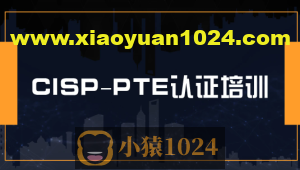If put on a parameter, lombok will insert a null-check at the start of the method / constructor's body, throwing a {@code NullPointerException} with the parameter's name as message.
If put on a field, any generated method assigning a value to this field will also produce these null-checks.
可见 @NonNull 注解用于标注Field时,并非是直接校验所标注字段不能为空,而是对赋值该字段的方法加 null 校验。
如该对象
@Data
@AllArgsConstructor
public class ReqIn {
@NonNull
private Byte name;
private String id;
public ReqIn(){
System.out.println("无参构造");
}
}
编译生成 .class 文件如下
public class ReqIn {
@NonNull
private String name;
private String id;
public ReqIn() {
System.out.println("无参构造");
}
@NonNull
public String getName() {
return this.name;
}
public String getId() {
return this.id;
}
public void setName(@NonNull final String name) {
if (name == null) {
throw new NullPointerException("name is marked non-null but is null");
} else {
this.name = name;
}
}
public void setId(final String id) {
this.id = id;
}
public boolean equals(final Object o) {
if (o == this) {
return true;
} else if (!(o instanceof ReqIn)) {
return false;
} else {
ReqIn other = (ReqIn)o;
if (!other.canEqual(this)) {
return false;
} else {
Object this$name = this.getName();
Object other$name = other.getName();
if (this$name == null) {
if (other$name != null) {
return false;
}
} else if (!this$name.equals(other$name)) {
return false;
}
Object this$id = this.getId();
Object other$id = other.getId();
if (this$id == null) {
if (other$id != null) {
return false;
}
} else if (!this$id.equals(other$id)) {
return false;
}
return true;
}
}
}
protected boolean canEqual(final Object other) {
return other instanceof ReqIn;
}
public int hashCode() {
int PRIME = true;
int result = 1;
Object $name = this.getName();
int result = result * 59 + ($name == null ? 43 : $name.hashCode());
Object $id = this.getId();
result = result * 59 + ($id == null ? 43 : $id.hashCode());
return result;
}
public String toString() {
return "ReqIn(name=" + this.getName() + ", id=" + this.getId() + ")";
}
public ReqIn(@NonNull final String name, final String id) {
if (name == null) {
throw new NullPointerException("name is marked non-null but is null");
} else {
this.name = name;
this.id = id;
}
}
}
可见,对 setName() 和 @AllArgsConstructor 注解生成的全参数构造器,均对 name 入参做非 null 校验。
但当 @Controller 内 @RequestMapping 注解的接口,若以 ReqIn 作为封装的请求对象,则接口调用时若没有传 name 字段,则会发现接口接收到的入参里,虽然字段被标注了 @NonNull,但 name 确实为 null。
原因简单总述为:SpringMVC对参数解析和封装对象时,对于有无参构造器的对象,会使用无参构造器初始化,随后对传入的 Field 进行赋值,对没有传的 Field 则会忽略。因此,虽然带有 name 参数的构造器和 setName()均对 name 做了 null 校验,但实际上根本没有被调用。
A)初始化被封装对象

详述:
1、SpringMVC对参数解析和封装对象时
如果目标对象仅有一个 Constructor,则会调用该 Constructor 封装对象;
如果对象有多于一个 Constructor,则会取无参构造器来封装对象,本例中无参构造器为手动生成,使用 @NoArgsConstructor 同样效果。
如果对象没有指定构造器,这种情况在有 @NonNull 注解时不存在,因为 @NonNull 注解会对指定了该注解的 Field 生成 Constructor,参数与被注解字段数量一致。

2、如果被 @NonNull 注解的字段为 String,则注解不会生效。
@Data
@AllArgsConstructor
public class ReqIn {
@NonNull
private String name;
@NonNull
private String id;
public ReqIn(){
System.out.println("无参构造");
}
}
@RequestMapping("/req")
@Controller
public class ReqInController {
@GetMapping("/testAnnotation")
public String testAnnotation(ReqIn reqIn){
System.out.println(reqIn);
return "index";
}
}
2.1、如果请求时,带有 name 字段,则 name 字段会被设置为空字符串
请求:
http://localhost:1234/req/testAnnotation?id=133&name=
输出:
无参构造 ReqIn(name=, id=133)
2.2、如果请求时,不带有 name 字段,则 name 字段会被设置为 null
请求:
http://localhost:1234/req/testAnnotation?id=133
输出:
无参构造 ReqIn(name=null, id=133)
可见,对于 String 字段,在 SpringMVC 封装对象时,@NonNull 注解无法阻止字段被设置为null。
原因在于,调用无参构造器之后,由于没有传入 name,封装对象的 parameterTypes 仅有 id,进而没有调用过 setName()方法,@NonNull 注解对 name 字段自然无法约束非 null。
结论
要使 @NonNull 注解对于指定 Field 生效,则需要
1、被封装对象没有无参构造器
2、如果被注解 Field 是 String 类型,则如果该参数为空时,不要作为请求的 key-value 对的 key 传到后端接口。











